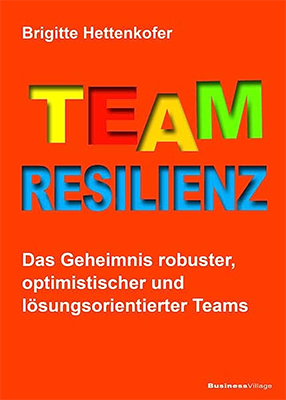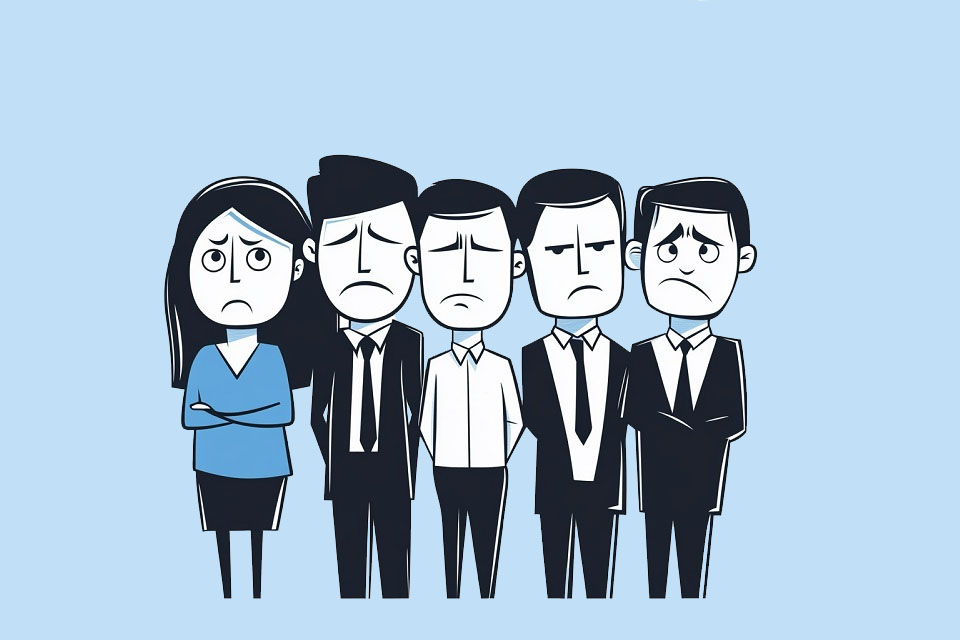Gaming as a catalyst for empathy and team resilience
Stuck in your thinking? – Changing perspectives help!
Empathy as a new trend in gaming
Dialogues with dragons: Role-playing games as social training camps
Reflection as a hidden feature in games
Playing together, growing together: how games make teams more robust
A quick look into the crystal ball
Concluding remarks
Playing with heart: the unexpected connection between gaming, empathy and team resilience
In the world of gaming, most people probably don’t immediately think of empathy and team resilience. But research shows a surprising connection between these two areas. In this article, I would like to describe how gaming can act as a catalyst to promote empathy and strengthen a team’s resilience.
Stuck in your thinking? – Changing perspectives helps!
Games allow us to slip into different roles – be it as a brave hero or a cunning villain. This change of perspective has the power to break down prejudices and broaden our understanding of different points of view. By putting ourselves in the shoes of other characters, we get to know their motivations, goals and challenges.
We realise that there is not always just black and white, but many shades of grey in between. As a result, we develop a deeper understanding of the complexity of human experience and can challenge prejudices and stereotypes. Immerse yourself in the fascinating world of changing perspectives!
Empathy as a new trend in gaming
A remarkable trend is emerging in the world of gaming: empathy is increasingly being recognised as an integral part of the gaming experience and game development. Game developers are consciously incorporating mechanics that encourage players to empathise with their characters and fellow players.
Games offer narrative decisions that affect the emotional well-being of other characters. Decisions made in this way strengthen players’ empathy.
We are currently discussing how multiplayer games foster a culture of support and understanding through co-operative challenges and collaborative goals, which contributes to positive social interaction.
It also explores how empathy-inspired games can help develop social skills that apply beyond the screen. Empathy-inspired games provide a platform where players can learn to deal with different perspectives and resolve conflicts constructively.
Games thus offer a unique opportunity to promote empathy and broaden understanding of the perspectives of others. They allow players to experience other people’s experiences first-hand.
Dialogues with dragons: Role-playing games as social training camps
When playing games, you often work together with other players, whether online or offline. These interactions allow you to develop social skills such as teamwork, cooperation, communication and conflict resolution. You need to learn to communicate effectively to plan strategies and overcome challenges in the game.
Understanding the strengths and weaknesses of team members is encouraged as you need to utilise their skills to be successful. Such skills are not only important in the game, but also in everyday life.
Teamwork and co-operation are required in many areas, whether at school, at work or in leisure activities. The ability to communicate effectively and resolve conflicts is also invaluable. Playing games can therefore be a fun way to strengthen these social skills and transfer them to other areas of life. Discover the valuable lessons that come with playing together!
Reflection as a hidden feature in games
After playing, it is crucial to find time for reflection and discussion. Sharing experiences and emotions allows players to improve their empathy skills and learn from each other.
By reflecting on the events of the game, they can share their insights and impressions. This not only promotes understanding of the different perspectives, but also trust and openness within the group. By talking about their own experiences, players can empathise with others and become more empathetic.
Discussions allow for an exchange of ideas and strategies, which enriches the learning process. So take time after playing to reflect and talk about your experiences. It is a valuable opportunity to develop empathy and learn from each other.
Playing together, growing together: how games make teams more robust
Playing together as a team is more than just having fun. It is a way to build a strong team dynamic and strengthen a team’s resilience.
Overcoming challenges together and achieving goals through methods such as LEGO Serious Play creates a sense of cohesion and co-operation. Players need to communicate to develop strategies and support each other.
Trust in each other grows when you can rely on the skills and decisions of your team members. In the game worlds, teams can learn to adapt and react flexibly to unforeseen situations.
They also learn how to deal with defeats and how to be more successful next time. Playing together is a fun and creative way to promote teamwork and bring out the strengths of each individual in a team.
A quick look into the crystal ball: Is gamifying work processes the key to more motivation?
Gamification is one way of making work areas more motivating. The term is often associated with high scores and fun elements that are intended to transfer the appeal of games to serious activities. However, if you take a closer look at what people actually want to experience when playing games, completely different things take centre stage.
A key factor in gaming is the sense of increasing challenge. People look for tasks that challenge them and give them the opportunity to improve their skills and abilities. This aspect can also be utilised in work environments to increase employee motivation.
By integrating playful elements into the working day, tasks and work processes can be made more exciting. Employees are given the opportunity to continuously develop and achieve new goals. The feeling of progress and personal growth can be very motivating.
Resources should be used instead of rewards. Games are a voluntary attempt to overcome increasingly difficult obstacles. We play with intrinsic motivation to continuously improve. This intrinsic motivation differs from extrinsic motivation, which arises from external incentives. While the latter can lead us to seek the shortest route to our goal, intrinsic motivation motivates us to engage intensively with topics and tasks and to learn everything that will help us progress, regardless of how time-consuming it is.
However, it is important to note that gamification is not equally effective for every employee and every work environment. It requires careful planning and adaptation to the individual needs and preferences of employees. Only in this way can gamification help to increase motivation and productivity in work areas.
And now imagine that everyone in the team is pulling in the same direction and wants to overcome difficult obstacles together and become better at working together. The obstacles are seen as sporting challenges and every small step forward is celebrated as if the team had just completed a marathon.
As far as gamification in the world of work is concerned, we are only at the beginning and yet the first promising approaches are emerging.
Concluding remarks
Games can help to promote empathy and strengthen team resilience. By changing perspectives while playing, prejudices can be broken down and a deeper understanding of the complexity of human experience can be developed. Playing together promotes team dynamics and the development of social skills. The importance of reflection and discussion after playing is emphasised.
Furthermore, the possibility of gamification in work environments is emphasised in order to increase the motivation of team members. The focus is that games support the intrinsic pursuit of challenge and personal growth and that gamification in work environments needs to be carefully planned and customised to the individual needs of employees.
Finally, Roman Rackwitz’s words of encouragement: “Play is a voluntary attempt to overcome increasingly difficult obstacles. We play because we have the intrinsic motivation to get better.”¹
Extra bonus
Here you will find 3 additional questions about gaming answered by Brigitte Hettenkofer (please press the plus buttons):
In which areas of work does it make sense to incorporate gamified elements and in which not?
Brigitte Hettenkofer: The basic mechanic in many games is that we want to get better and we voluntarily make an effort to do so.
If you use this basic mechanic for the world of work, then gamification elements are very suitable for anything that needs to be learnt, e.g. a new computer programme or the acquisition of new skills.
Gamification is also worthwhile for team development. In an escape room, for example, everyone has to work together to solve puzzles and get out of a virtual or physical room. Skills that promote cooperation are trained in a playful way.
Another example is Lego Serious Play: teams use Lego to visualise ideas and discuss complex topics in a playful environment.
Gamification is less useful in areas where deep concentration is required to solve complex problems, such as in research and development, programming or operations. Here, gamification can be perceived as a distraction or be massively disruptive.
The gamified elements must therefore suit the employees and the context – no trivial task.
Participation in the game in the private sphere is voluntary. To what extent is this voluntary nature important in a professional context?
Brigitte Hettenkofer: Voluntariness is also important in a professional context because it leads to greater acceptance. If employees take part in gamified activities voluntarily, they are more likely to accept them positively and participate with commitment.
Voluntary participation can promote intrinsic motivation, while forced participation can cause demotivation or resistance.
The possibility of choice can also strengthen the feeling of autonomy and improve overall job satisfaction.
Voluntariness ensures that gamification is perceived as a supportive tool and not as an additional stress factor.
Ideally, employees create motivating playful elements themselves and they are not imposed from outside.
How does gaming contribute to improved collaboration in the long term?
Brigitte Hettenkofer: Many playful elements require employees to act as a team and coordinate their actions. Obstacles that arise often require creative solutions that can be worked out together as a team and communicated quickly and clearly. If a team experiences that it has successfully mastered a task, this has a positive effect on cohesion and commitment to the real team goals. At the same time, it increases trust between the team members.
In addition, some gamified elements make it possible,
- to take on leadership roles and thus develop leadership qualities, as well as
- reduce stress and generally lighten the mood.
In short, gamification can promote skills and behaviours that are also essential for improved collaboration in a professional working environment. The trick is to create coherent playful elements for the working environment.
[1] Roman Rackwitz: ManagerSeminare, issue 308, November 2023, page 18 cont.
Brigitte Hettenkofer has written an interesting book in German: Team Resilienz: Das Geheimnis robuster, optimistischer und lösungsorientierter Teams. Highly recommended!
If you like the article or would like to discuss it, please feel free to share it in your network.
Brigitte Hettenkofer has published two more articles in the t2informatik Blog:

Brigitte Hettenkofer
Brigitte Hettenkofer (Dipl. Theologin) is passionate about helping people to develop their inner strength and resilience. For twenty years she has been offering consulting, training and team development with her company NeuroResilienz, helping people and teams to remain resilient and psychologically resilient.
Her focus is on inspiring and encouraging teams to navigate strengthened through challenging phases. To realise her vision, she has developed the Team Resilience Wheel, a tool that helps teams recognise and build on their resilience potential: Becoming Stronger Together.


